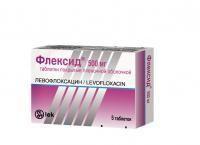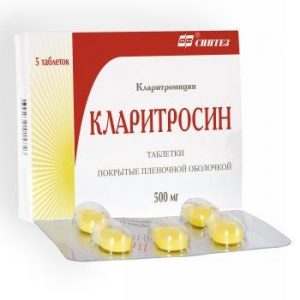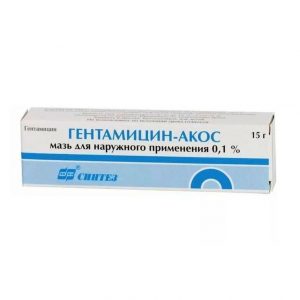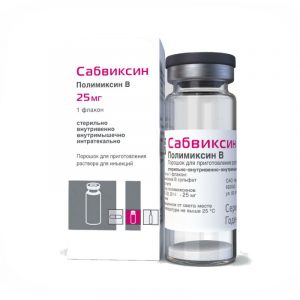Description
release form
tablets, film-coated
Packing
5 pcs.
Pharmacological action
Flexid has a broad spectrum antibacterial, bactericidal effect.
Indications
Infections, caused by microorganism strains susceptible to the drug: – ENT infections (acute sinusitis)
– lower respiratory tract infections (acute bronchitis, chronic bronchitis, community-acquired pneumonia)
– uncomplicated urinary tract and kidney infections
– complicated urinary tract infections (urinary tract infections including pyelonephritis)
– prostatitis
– infections of the skin and soft tissues.
Contraindications
– epilepsy
– tendon lesions that occurred during previous treatment with fluoroquinolones
– under the age of 18 years
– pregnancy lactation (breastfeeding) other sensitivity or other – Flexida.
Caution: – when prescribing levofloxacin in combination with drugs that affect tubular secretion, such as probenecid and cimetidine, especially in the treatment of patients with impaired renal function
– in the treatment of patients with a predisposition to epileptic seizures, during treatment with fenbufen and similar non-steroidal anti-inflammatory drugs (NSAIDs ) or drugs that lower the threshold of epileptic seizures, such as theophylline
, in patients with latent or obvious impaired glucose-6- osfatdegidrogenazy because of the risk of hemolytic reaction.
Composition
1 tab. contains levofloxacin (in the form of a hemihydrate) 500 mg
excipients: lactose monohydrate, povidone, sodium carboxymethyl starch, talc, silicon dioxide colloidal anhydrous, croscarmellose sodium, glyceryl dibehenate
shell composition: iron hypromellose, iron oxide, giprolosa red, titanium dioxide, talc
Dosage and administration
Flexid is taken orally: without regard to food intake, 250-500 mg once a day. The duration of treatment depends on the indications for use. In case of impaired renal function, an adjustment of the administration regimen is required, including dose reduction depending on creatinine clearance.
Side effects of
Infrequently:
– hypersensitivity
– headache
– tinnitus
– tachycardia, decreased blood pressure
– stomatitis, abdominal pain, nausea, vomiting, rash, rash, rash rash
– hyperthermia
Rarely:
– bronchospasm, dyspnea
– dyspepsia
Very rare:
– anaphylactic and anaphylactoid reactions (Stevens-Johnson syndrome, Lyell’s syndrome)
– bleeding
Frequency unknown:
– facial edema
– decreased aggregation of thrombocytes way: very common (> 10%), common (1-10%), uncommon (0.1-1%), rare (0.01-0.1%), very rare (<0.01%). From the digestive system: common – nausea, diarrhea (including blood), increased activity of liver enzymes (ALT, AST) uncommon – decreased appetite, vomiting, abdominal pain, dyspepsia, hyperbilirubinemia rare – enterocolitis, pseudomembranous colitis is very rare – hypoglycemia, hepatitis. From the side of the nervous system: uncommon – headache, dizziness, sleep disturbance rare – paresthesia, tremor, anxiety, agitation, confusion, convulsions are very rare – hallucinations, extrapyramidal disturbances and other disorders of coordination. On the part of the sensory organs: very rare – impaired vision, hearing, smell, taste and tactile sensitivity. From the cardiovascular system: rare – tachycardia, very rare hypotension – vascular collapse. From the side of the musculoskeletal system: rare – arthralgia, myalgia, tendonitis are very rare – tendon rupture (for example, the Achilles tendon), muscle weakness (is especially important for patients with myasthenia gravis) in some cases – rhabdomyolysis. From the urinary system: uncommon – hypercreatininemia is very rare – interstitial nephritis, impaired renal function up to acute renal failure. From the side of the blood system and blood forming organs: non-common – eosinophilia, rare leukopenia – neutropenia, thrombocytopenia are very rare – agranulocytosis in some cases – hemolytic anemia, pancytopenia. Allergic reactions: non-common – itching, rash rare – urticaria, bronchospasm, dyspnea very rare – angioedema, hypotension, anaphylactic shock, allergic pneumonitis, photosensitivity in some cases – Stevens-Johnson syndrome, toxic epidermal necrolysis (multi-epidermal necrolysis) erythema. Other: not common – asthenia is very rare – fever, vasculitis. Storage conditions In the dark place, at a temperature not exceeding 25 ° C. Shelf life 3 years. active substance Levofloxacin lekarstvennaja form tablets Lek dd, Switzerland




